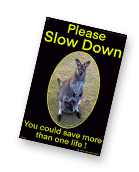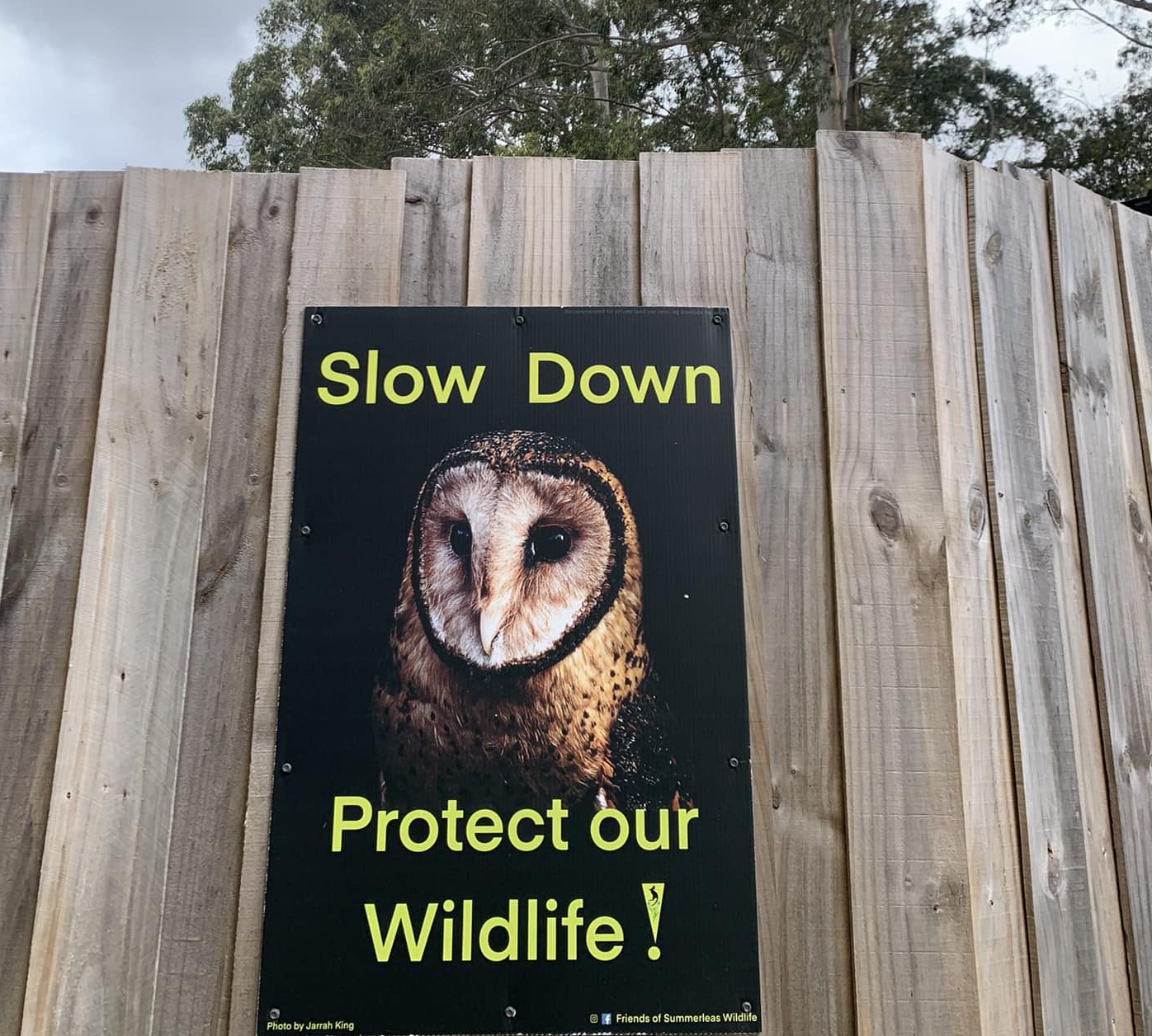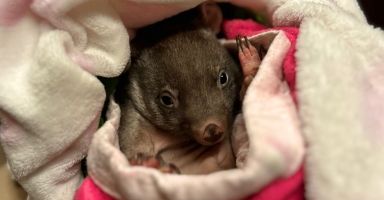Things you can do in your local area
Roadside Awareness Campaigns:
Organise campaigns to raise awareness about wildlife crossing roads, including signage to alert drivers to slow down in areas known for animal activity. This could involve local artists creating eye-catching signs.
 Assisting motorists to reduce their vehicles speed in your community:
Assisting motorists to reduce their vehicles speed in your community:
Slowing down by at least 10 km/h (up to 35km/h on fast roads) will mean that a driver is more in control of the vehicle when they come across an animal, and will also give the animal more time to respond to the oncoming threat.
Purchase a Slow Down sign, bin or bumper sticker
You can assist in making a motorist slow down when driving at night by purchasing a sign for your fence/front yard from Friends of Tasmanian Wildlife - it's an affordable way to be a voice for wildlife in your community.
Please note, the signs must be erected on your own property/ boundary/fence.
Wildlife Crossings Projects:
Work with local authorities to advocate for the installation of wildlife crossings, such as underpasses or overpasses, in high-traffic areas. Community members can gather data on wildlife roadkill to support these initiatives.
Roadside Clean-Up Events:
Host regular clean-up events along roadsides to reduce litter that can attract wildlife and create hazardous conditions. This promotes community involvement while enhancing local habitats
Community Walks and Observations:
Organise walking or cycling groups to observe wildlife activity along roads. Participants can document sightings and share information about safe crossing spots for animals.
Information Sessions:
Conduct sessions that educate community members about the local wildlife species that are commonly affected by traffic. Sharing tips on how to drive safely in these areas can help reduce accidents
Partnerships with Local Schools:
Collaborate with schools to create educational programs focused on wildlife conservation, emphasising the dangers posed by roads. This could include projects like art displays or presentations.
Social Media Initiatives:
Use social media platforms to share information about wildlife safety on roads, including statistics and stories of local wildlife. Encourage community members to report sightings and incidents.
Involve Local Businesses:
Partner with local businesses to sponsor wildlife safety initiatives or provide community events resources. For example, a local café might offer discounts for participants in clean-up events.
Encourage Reporting:
Set up a system for community members to report wildlife sightings and roadkill. This data can be valuable for local wildlife management efforts.
Volunteer Programs:
Create opportunities for community members to volunteer for wildlife rescue organisations, especially those that respond to animals injured on the roads. By fostering awareness and collaboration, community members can work together to create safer environments for Tasmanian wildlife along local roads.
Join Gardens for Wildlife
Gardens for Wildlife (GFW) encourages and recognises wildlife-friendly gardens and environmentally friendly practices in urban areas across Tasmania. Through partnerships with landholders, GFW supports property owners to increase natural diversity, regardless of where they live.
Assess your property
Identify what is causing roadkill if it happens near your place, could it be as simple as creating a water source to prevent animals from having to cross the road?



